INTERNACIONAL
Donald Trump confía en lograr un acuerdo con China pero advirtió a Beijing: “No le conviene seguir tomando represalias”

El presidente de Estados Unidos, Donald Trump, se mostró este viernes “optimista” sobre la posibilidad de alcanzar un acuerdo comercial con China, pese al aumento recíproco de aranceles entre ambos países, que ha generado una fuerte inestabilidad en los mercados financieros.
Según indicó la portavoz de la Casa Blanca, Karoline Leavitt, “a China no le conviene seguir tomando represalias” y afirmó que “Estados Unidos es la economía más fuerte y la mejor del mundo”.
El Comité de Aranceles Aduaneros del Consejo de Estado chino anunció este viernes que, como respuesta a las últimas medidas de Washington, los aranceles sobre productos estadounidenses subirán del 84% al 125 por ciento. Esta medida, que entrará en vigor el 12 de abril, se suma al incremento arancelario impuesto previamente por Estados Unidos, que elevó la tasa sobre bienes chinos hasta el 145 por ciento.
En una declaración pública, el gobierno chino condenó las políticas comerciales estadounidenses por “violar gravemente las normas del comercio internacional” y ejercer “una política unilateral de acoso y coerción”. El Ministerio de Finanzas de China advierte que no se prevén nuevos aumentos y reconoce que los niveles actuales de imposición hacen inviable la importación de la mayoría de productos.
Trump, por su parte, defendió su estrategia arancelaria como un éxito en su red Truth Social. “Nos está yendo muy bien con nuestra política de aranceles. ¡Muy emocionante para Estados Unidos y el mundo! Está avanzando rápidamente”, escribió. Según la Casa Blanca, además de China, otros 15 países han presentado ofertas en el marco de la tregua arancelaria de 90 días que no incluye a Beijing.
La portavoz Leavitt reiteró que el presidente estadounidense mantiene su posición: “Cuando Estados Unidos recibe un golpe, contraataca con más fuerza”. Aunque no confirmó si hay contactos formales con el gobierno chino, afirmó que Trump confía en que se alcanzará un acuerdo.

Preguntada por la colaboración internacional para aislar comercialmente a China, Leavitt aseguró que socios internacionales “no han parado de llamar a Washington”. “Necesitan a Estados Unidos. Necesitan nuestros mercados. Necesitan a nuestros consumidores”, afirmó.
Desde Beijing, el presidente Xi Jinping realizó sus primeras declaraciones públicas sobre la escalada comercial y afirmó que su país “no tiene miedo”. En una reunión con el presidente del Gobierno de España, Pedro Sánchez, Xi sostuvo que la Unión Europea (UE) y China deben “resistir conjuntamente las prácticas de acoso unilateral”.
Mientras tanto, la tensión ha repercutido en los mercados. Los inversores vendieron bonos del Tesoro estadounidense, el dólar se debilitó y las bolsas mostraron fuertes oscilaciones. A pesar de los temores de recesión, Trump reiteró el jueves que espera alcanzar un acuerdo con Xi: “Ha sido amigo mío durante mucho tiempo. Creo que lograremos algo bueno para ambos países”.

El entorno financiero refleja una creciente incertidumbre. Según economistas citados por la agencia AFP, los niveles arancelarios alcanzados son “tan altos que ya no tienen sentido”, aunque destacan que China está dispuesta a avanzar “hasta donde sea necesario”. La Reserva Federal de Estados Unidos advirtió por su parte de un posible aumento de la inflación y una desaceleración del crecimiento económico como consecuencia de la actual política arancelaria.
Por otro lado, la Unión Europea ha evitado hasta ahora tomar medidas retaliatorias similares. Sin embargo, la presidenta de la Comisión Europea, Ursula von der Leyen, aseguró en una entrevista con Financial Times que el bloque cuenta con “una amplia gama de contramedidas”, entre ellas posibles sanciones a los servicios digitales, que afectarían directamente a empresas tecnológicas estadounidenses.
El próximo encuentro de alto nivel entre la UE y China está programado para julio, coincidiendo con el 50º aniversario de sus relaciones diplomáticas.
(Con información de AFP, EFE y Reuters)
INTERNACIONAL
Trump White House celebrates latest chapter of wins at 200-day mark
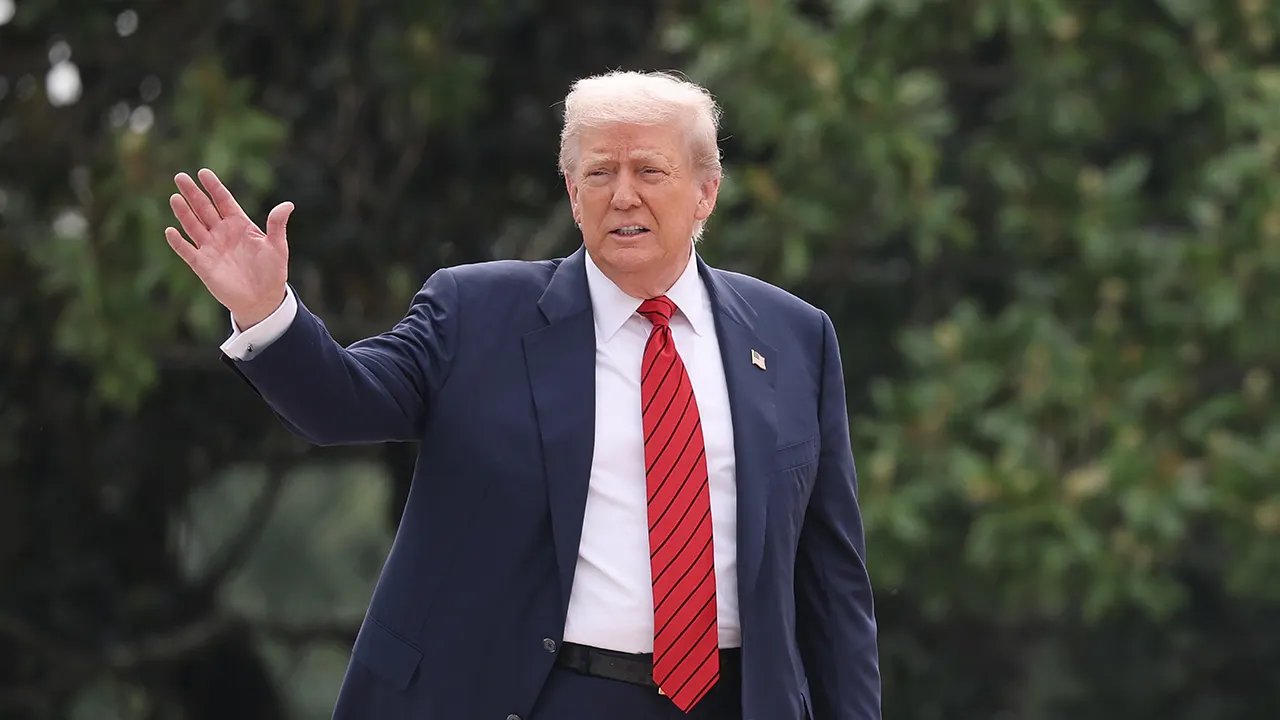
NEWYou can now listen to Fox News articles!
President Donald Trump notched his 200th day back in office Thursday, with the administration celebrating a lengthy list of wins across its latest chapter of actions and policies unfolding at a breakneck pace.
«In just 200 days, President Trump has turned America into the hottest country in the world,» White House spokeswoman Taylor Rogers told Fox News Digital. «Under Joe Biden’s failed leadership, families and businesses were struggling, and America was dead — but President Trump has quickly restored American greatness. The historic trade deals and peace deals he secured on behalf of the American people made President Trump’s second 100 days just as successful as the first.»
Trump hit his 100th day of his second administration in April, which included operating at warp speed as Trump signed dozens of executive orders, leveled harsh tariffs on foreign nations to bring parity to the U.S.’ trade deficit, negotiated with foreign nations to work to end wars, unveiled the Department of Government Effeciency to investigate the federal government for potential mismanagement and fraud, locked down the U.S. border with Mexico and continued an overhaul of the federal government so it falls in line with the admin’s «America First» policies.
The first 100 days of a new administration commonly has been viewed as a symbolic benchmark to measure a president’s early successes. A White House official told Fox Digital that Trump’s measure of success was not only seen in the first 100 days, but also in the timeframe between the 100th day and Aug. 7 — the 200th day.
The White House touted that the administration across the board has seen big wins involving immigration, the economy and trade, education, foreign policy, bilateral meetings, strides in the AI race, unleashing energy initiatives and releasing bombshell details on the Russia hoax from the Obama era in the past 100 days.
TRUMP HAS NOW BEEN IN OFFICE FOR SIX MONTHS, FOR THE SECOND TIME. HERE ARE THE HIGHLIGHTS
President Donald Trump smiles as he meets with President Nayib Bukele of El Salvador in the Oval Office of the White House on April 14, 2025, in Washington. (Win McNamee/Getty Images)
The president secured a massive win ahead of the Fourth of July when Republican lawmakers in Washington passed the One Big Beautiful Bill Act, which Trump touted as securing big tax cuts that will make the U.S. economy similar to a «rocket ship» as Americans begin feeling its effects.
House and Senate Republicans delivered the legislation to Trump’s desk in July after a hard-fought battle that included a handful of Republicans joining Democrats in their condemnation of the bill, mostly over its increase to the debt limit.
The bill includes key provisions to permanently establish individual and business tax breaks included in Trump’s 2017 Tax Cuts and Jobs Act, and incorporates new tax deductions to cut duties on tips and overtime pay. It also rescinds certain Biden-era green energy tax credits, allocates approximately $350 billion for defense and Trump’s mass deportation efforts and institutes Medicaid reforms.
«We have officially made the Trump tax cuts permanent,» Trump said during the July signing ceremony. «That’s the largest tax cut in the history of our country. . . . After this kicks in, our country is going to be a rocket ship economically. We’ve delivered no tax on tips, no tax on overtime, and no tax on Social Security for our great seniors. It makes the child tax credit permanent for 40 million American families. The Golden Age of America is upon us.»
On the economic front in the last 100 days: the U.S. economy grew at a 3.0% pace in the second quarter, which shattered forecasters’ predictions; Trump secured trade deals with nations such as South Korea, Japan, Indonesia, the Philippines and the European Union. While businesses such as drugmaker AstraZeneca, carmaker Rolls-Royce, and various tech companies pledging millions in investments in the U.S.
Trump celebrated ahead of his inauguration that the «golden age» of America would unfold under his leadership — which has been a common theme across his past 200 days. At the forefront of Trump’s «golden age» plan of action has not only involved leveling tariffs on foreign nations, but also unleashing artificial intelligence and energy initiatives.
«From this day forward, it’ll be a policy of the United States to do whatever it takes to lead the world in artificial intelligence,» Trump said in July, when he signed a trio of executive orders aimed at boosting the country’s artificial intelligence capabilities.
DETAILS OF TRUMP’S HIGHLY ANTICIPATED AI PLAN REVEALED BY WHITE HOUSE AHEAD OF MAJOR SPEECH
The Trump administration rolled ut its AI Action Plan in July after Trump ordered the federal government in January to develop a plan of action for artificial intelligence in order to «solidify our position as the global leader in AI and secure a brighter future for all Americans.» The AI Action Plan includes a three-pillar approach focused on American workers, free speech and protecting U.S.-built technologies.

The Trump administration rolled ut its AI Action Plan in July after Trump ordered the federal government in January to develop a plan of action for artificial intelligence in order to «solidify our position as the global leader in AI and secure a brighter future for all Americans.» (Chip Somodevilla/Getty Images)
The Trump administration has notched massive wins in the artificial intelligence race in recent days, which pits the U.S. against China to develop the most high-tech artificial intelligence systems. Oracle and OpenAI, for exampled, announced in July that the companies will further develop the Stargate project, which is an effort to launch large data centers in the U.S. The two companies’ most recent announcement promises an additional 4.5 gigawatts of Stargate data center capacity, a move expected to create more than 100,000 jobs across operations, construction and indirect roles such as manufacturing and local services.
While the U.S. General Services Administration announced on Wednesday that OpenAI’s ChatGPT Enterprise is now available to all federal agencies to incorporate into their workflow at $1 per agency, the GSA told Fox Digital. The deal with OpenAI, the tech company behind ChatGPT, is part of GSA’s OneGov Strategy that aims to modernize «how the federal government purchases goods and services» under the Trump administration.
TRUMP RIDES MAJOR WAVE OF MOMENTUM GOING INTO JULY FOURTH AFTER IRAN, BBB, SUPREME COURT AND LAWSUIT VICTORIES

Chris Wright, Donald Trump, Doug Burgum (Reuters)
While the AI race hits new levels, Trump has also cut red tape surrounding the energy sector — which is vital to the growth of AI and the tech sector. Energy companies in the past 100 days have pledged billions to upgrade nuclear plants and modernize gas pipelines, while the administration celebrated the July opening of the newest coal plant in Wyoming in decades, as well as Trump signing a multidecade agreement to increase natural gas exports to Europe.
On the domestic political front, the Trump administration has also championed uncovering and releasing further details surrounding the Russian collusion hoax that plagued Trump’s 2016 presidential win and first presidency.
Director of National Intelligence Tulsi Gabbard released bombshell unclassified documents in July that reportedly show «overwhelming evidence» that then-President Barack Obama and his national security team allegedly laid the groundwork for what would be the yearslong Trump–Russia collusion probe after Trump’s election win against former Secretary of State Hillary Clinton in 2016.
FOX NEWS POLL: THE FIRST 100 DAYS OF PRESIDENT TRUMP’S SECOND TERM
«The implications of this are frankly nothing short of historic,» Gabbard told Fox News’ Maria Bartiromo in July.
«Over 100 documents that we released on Friday really detail and provide evidence of how this treasonous conspiracy was directed by President Obama just weeks before he was due to leave office after President Trump had already gotten elected,» she continued. «This is not a Democrat or Republican issue. This is an issue that is so serious it should concern every single American, because it has to do with the integrity of our democratic republic.»
Attorney General Pam Bondi directed the DOJ to act on the criminal referral Gabbard sent in July over the matter. Amid the DNI’s bombshell revelations, FBI Director Kash Patel reported late in July that the FBI had recovered a trove of sensitive documents related to the origins of the Trump–Russia probe buried in multiple «burn bags» left in the bureau. Burn bags are used to destroy documents designated as classified or higher, Fox Digital previously reported.
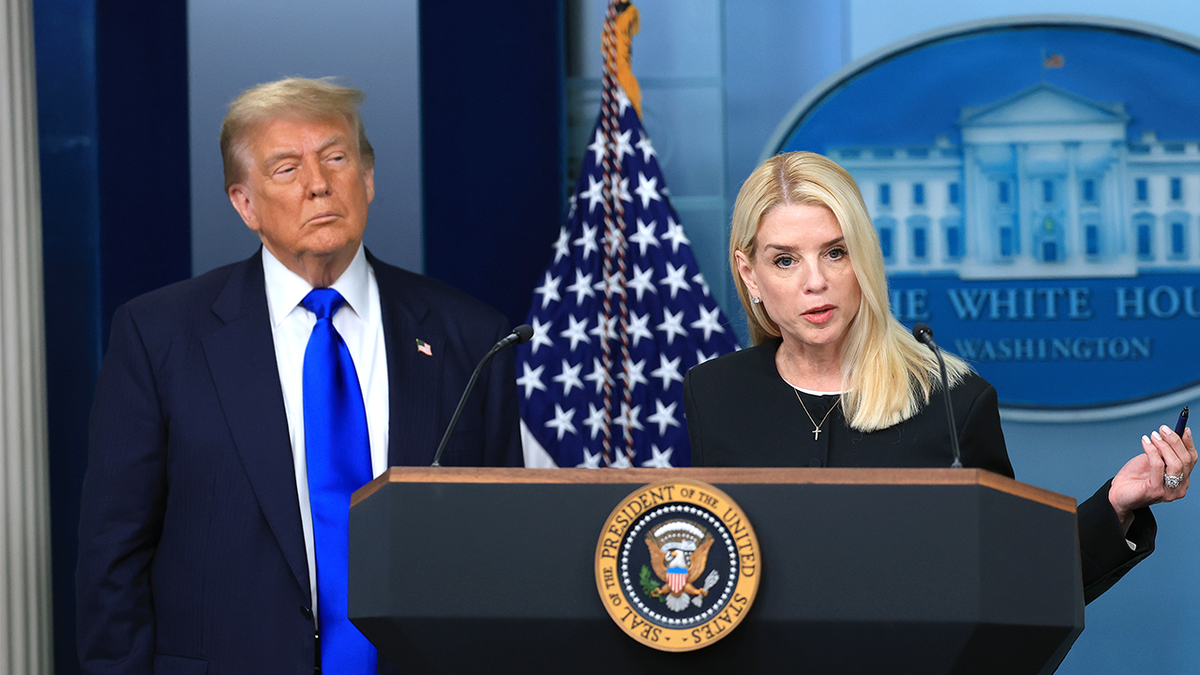
U.S. Attorney General Pam Bondi speaks alongside President Donald Trump on recent Supreme Court rulings in the briefing room at the White House on June 27, 2025, in Washington, DC. The Supreme Court ruled 6-3 that individual judges cannot grant nationwide injunctions to block executive orders, including the injunction on President Trump’s effort to eliminate birthright citizenship in the U.S. The justices did not rule on Trump’s order to end birthright citizenship but stopped his order from taking effect for 30 days. (Photo by Joe Raedle/Getty Images) (Getty Images)
CLICK HERE TO GET THE FOX NEWS APP
Trump is expected to continue the breakneck pace of presidential actions and policies as his administration continues ironing out trade deals, negotiating with Russia to end the war continuing to rage in Ukraine, as well as a ceasefire between Hamas and Israel, and prepares for another high-stake overseas trip to the UK in September, when the royal family is expected to roll out the red carpet for Trump’s unprecedented second state visit to the country.
Fox News Digital’s Brooke Singman, Ashley Oliver and Diana Stancy contributed to this report.
donald trump,white house,russia investigation,taxes
INTERNACIONAL
World leader refuses to ‘humiliate’ himself with Trump trade negotiations
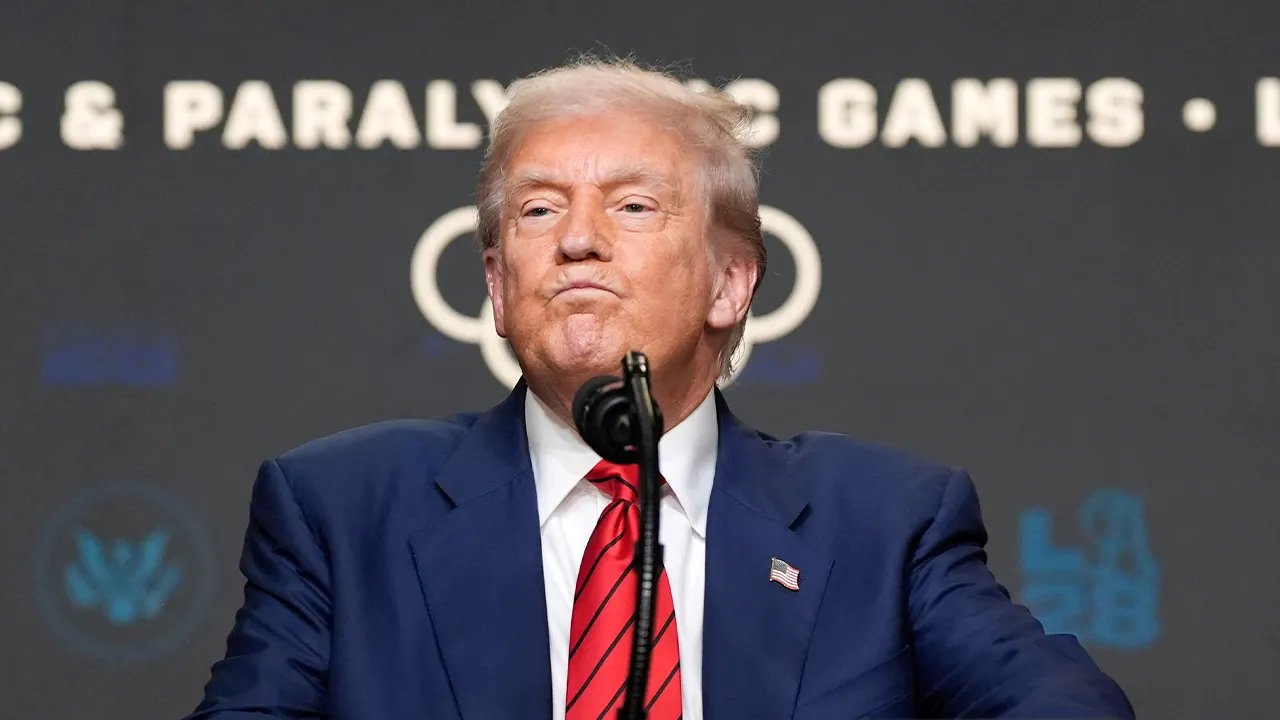
NEWYou can now listen to Fox News articles!
As President Donald Trump’s global tariffs go into effect, Brazil’s President Luiz Inácio Lula da Silva remains staunchly opposed to making deals with the U.S. The South American leader has been an outspoken critic of U.S. tariffs, which he sees as a bullying tactic.
«The day my intuition says Trump is ready to talk, I won’t hesitate to call him,» Lula told Reuters. «But today my intuition says he doesn’t want to talk. And I won’t humiliate myself.»
More than 60 countries and the European Union were hit with new tariffs just after midnight on Thursday. While the baseline rate is 10%, select nations, like Brazil, face additional penalties that push the total tariff up to 50%.
In the past, Lula slammed Trump’s tariffs as «unacceptable blackmail.»
TRUMP’S GLOBAL RESET OF TRADE RELATIONSHIPS WILL REMAIN IN THE SPOTLIGHT THIS WEEK
Brazil’s President Luiz Inacio Lula da Silva speaks during an interview with Reuters at the Alvorada Palace, in Brasilia, Brazil, AuG. 6, 2025. (REUTERS/Adriano Machado)
On July 31, one day after announcing an additional 40% tariff on Brazil, Trump said that Lula «can talk to me anytime he wants.» The Brazilian president seemed to respond in a post on X without mentioning Trump by name. He said that his country has «always been open to dialogue.»
«The ones who determine Brazil’s direction are the Brazilians and their institutions. At this moment, we are working to protect our economy, businesses, and workers, and to respond to the tariff measures of the U.S. government,» Lula wrote.
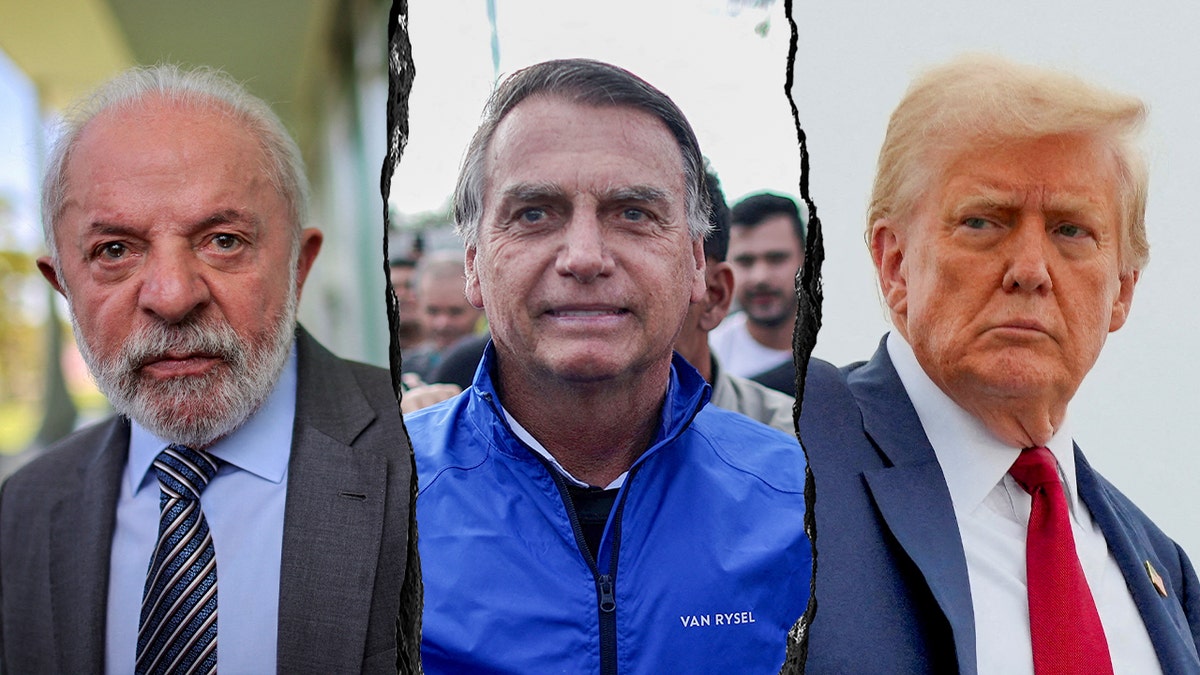
Brazil’s President Luiz Inacio Lula da Silva and President Donald Trump feud over tariffs and Brazil’s treatment of Bolsonaro. (Adriano Machado/Evelyn Hockstein/rEUTERS)
TRUMP CALLS FOR IMMEDIATE END TO ‘UNJUST’ TRIAL OF FORMER BRAZILIAN PRESIDENT JAIR BOLSONARO
The dispute between Trump and Lula goes deeper than trade deals. The White House has been open about its opposition to Brazil’s treatment of its former President Jair Bolsonaro.
This was emphasized in an executive order that Trump signed last month in which he decried «the Government of Brazil’s politically motivated persecution, intimidation, harassment, censorship, and prosecution» of Bolsonaro.
Lula told Reuters that Brazil’s Supreme Court «does not care what Trump says, and it should not.» He also reportedly said that Bolsonaro was a «traitor to the homeland» who should face another trial for provoking Trump’s intervention.
«But this now is not a small intervention. It’s the president of the United States thinking he can dictate rules for a sovereign country like Brazil. It’s unacceptable,» Lula said.
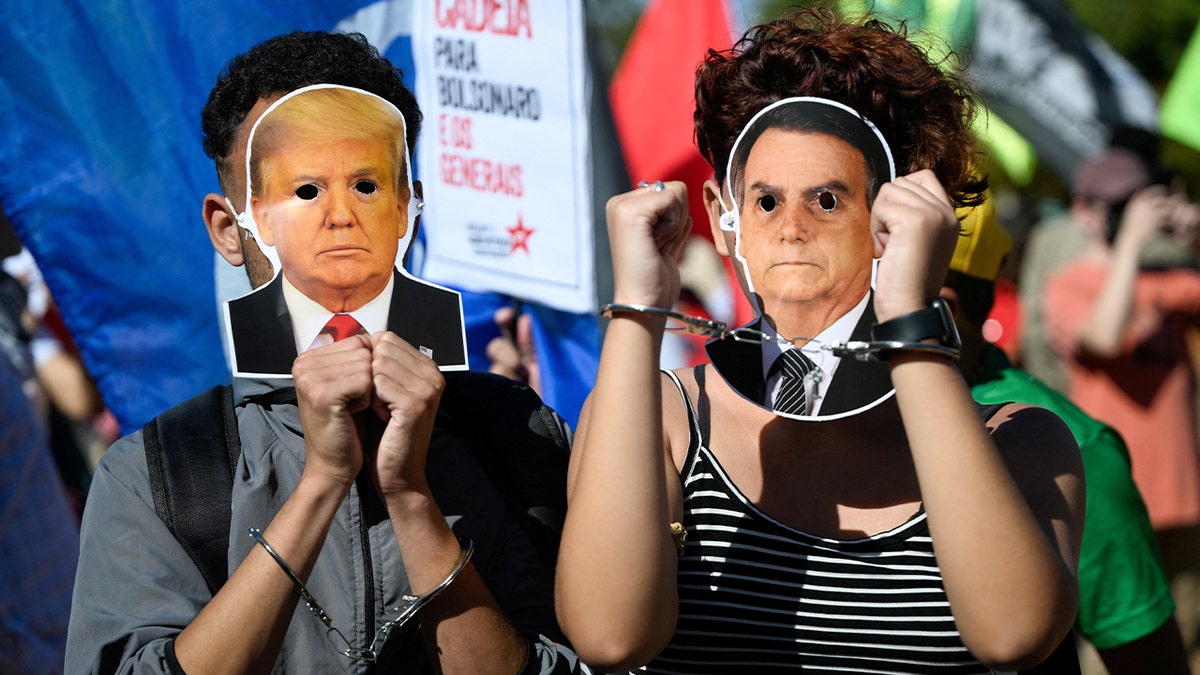
Demonstrators, wearing masks depicting President Donald Trump and former Brazil’s President Jair Bolsonaro, gesture in handcuffs during a protest against Trump’s tariffs on Brazilian products, in front of the U.S. Embassy in Brasilia, Brazil, Aug. 1, 2025. (REUTERS/Mateus Bonomi)
BRAZIL’S EX-PRESIDENT AND MAJOR TRUMP ALLY BOLSONARO PLACED ON HOUSE ARREST
Bolsonaro, who was defeated by Lula in 2022, was recently placed under house arrest amid ongoing legal proceedings over his alleged attempt to overturn the country’s presidential election results.
CLICK HERE TO GET THE FOX NEWS APP
Brazil’s president is seemingly unafraid of entering negotiations with Trump. Though he said that there were no pending reciprocal tariffs, Lula told Reuters he was planning to call the leaders of BRICS member states to discuss a possible joint response to the U.S.
Additionally, according to Reuters, Lula said Brazil was looking at joining a collective complaint with other countries at the World Trade Organization.
brazil,world,trade,donald trump
INTERNACIONAL
«Si no asaltás el camión, no comés»: la lucha por conseguir harina se tiñe de sangre en Gaza
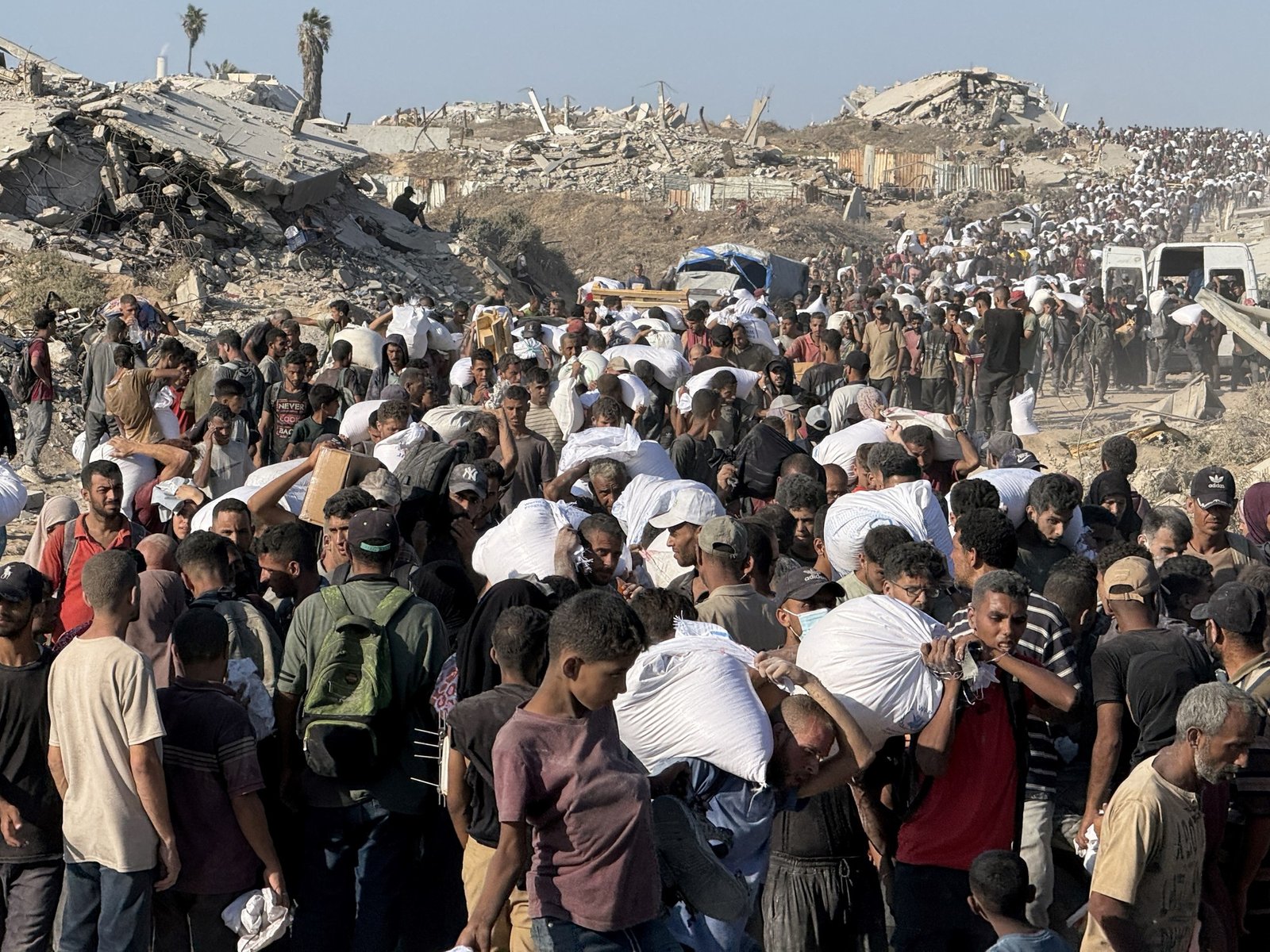
«Somos muertos vivientes»
Bandas que saquean camiones y roban a civiles
Tres kilómetros con los heridos a hombros

 CHIMENTOS2 días ago
CHIMENTOS2 días agoMalas noticias para Wanda Nara: por qué la bajaron misteriosamente de MasterChef: «No va a salir este año»

 DEPORTE2 días ago
DEPORTE2 días agoEl Como de Fàbregas, el nuevo rico de Italia

 POLITICA2 días ago
POLITICA2 días agoSebastián Pareja justificó el armado de listas de LLA en la Provincia: “El desafío era dar una opción diferencial”






















